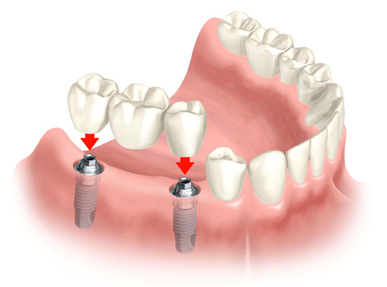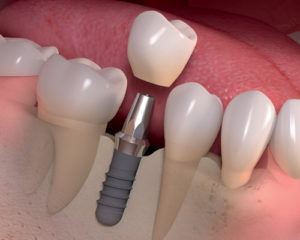Implant
What is Dental Implant:
A dental implant is a small post-like device made of titanium, it is placed in the jaw bone to replace missing tooth roots. Once healed, dental implants act as a base to anchor the visible portion of the artificial tooth – ranging from individual crowns, multi-tooth bridges, or full-arch dental prostheses.


A dental implant is the only solution that replaces the missing tooth root, offering important benefits:
- Feels and looks like a natural tooth
- Helps prevent and minimize bone loss
- Helps preserve surrounding, healthy teeth
- Improves appearance
Dental Implant Procedure:
Plan & Diagnosis: Xray images and CT Scan are taken to determine if an implant is the right solution
Implant placement: The specialist will place the implant under local anesthesia and form the gum tissue around the implant
Healing: The bone around the implant grows and integrates with the implant surface during the healing phase, which will last between 3-4 weeks and a few months.
Temporary restoration: If the implant is in a visible area, a temporary restoration may be placed while the site heals.
Placement of implant abutment: When healing is complete, Dentist will place the final abutment, a small piece that connects the implant to the crown. Dentist will take an impression of the implant site to order the crown, bridge or denture from a dental laboratory.
Final crown: When the final crown is returned from the lab, the temporary tooth will be removed and the final crown will be put into place.
After care: Just like natural teeth, implants require regular check-ups and conscientious oral hygiene. With appropriate care, the long-term function of implants can be maintained. Your dentist will guide you on cleaning and hygiene measures.
Additional surgical procedures
Bone Grafting Solutions for Bone Loss: Some patients may not have enough bone to support a dental implant. In this case, your doctor can perform a ‘bone grafting’ procedure to help your body build new bone for the implant placement.





